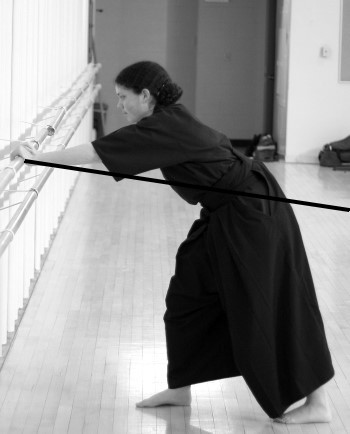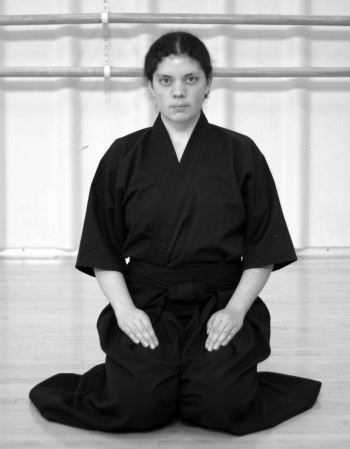If It Looks Good It's
Probably Right
copyright © 2008 Kim Taylor, all rights reserved
There's a rather common assumption in the martial arts that the
movements are strange to look at and hard to learn. Yet the senior
sensei spend years telling us that we have to do it with a "natural
style". Now sometimes I've heard it explained that they're talking
about a "natural" that comes with years and years of doing the awkward
and unnatural movements of the martial arts until they seem natural.
I don't agree. I think that the sensei mean just what they say, that
you should move naturally, and natural is what looks natural. In other
words, if it looks good, it's right.
Humans are quite amazing, we know how to read lines of force, interpret
inertia almost instantly, and perform ballistics calculations that give
computers a hard time. We know if someone is pushing or leaning, we
know if we ought to get out of the way (runaway automobile) or stop it
if it's rolling past (runaway baby stroller), and we can catch a ball,
while on the run, over our shoulder.
We can tell if something looks good or not.
Lines of force
Check out the two photos below, if Pam were helping to push your car
out of the snow which one looks good to you? Which one looks like she's
taking a rest?
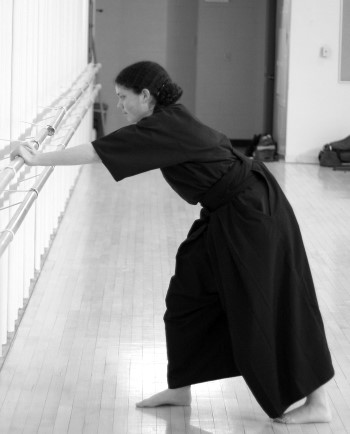
Fig 1
|
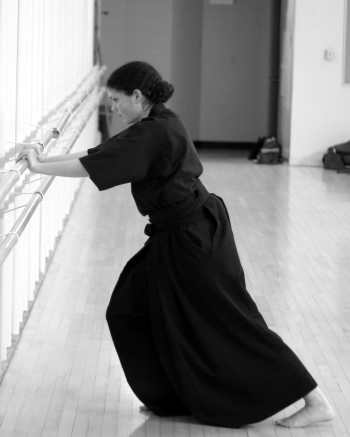
Fig 2
|
If you answered Figure 2, the one on the
right, you agree with me, I think she's working to get my car back on
the road. Now, if she's performing a solo martial arts movement and
she's supposed to be driving someone back 10 feet with a shove, which
posture do you believe?
There are all sorts of clues that we are picking up in figure 2, not
the least of which is her raised back heel which looks like it's
providing some grip and shove. We're also seeing that her arms and
shoulders have dropped below the bar, and her elbows are no longer
locked. Her front knee pushes forward.
But most of all her hips have moved forward so that the lines of force
become aligned with the supposed action, the shove forward. Take a look
at the two images again below.
|
Fig
3
|
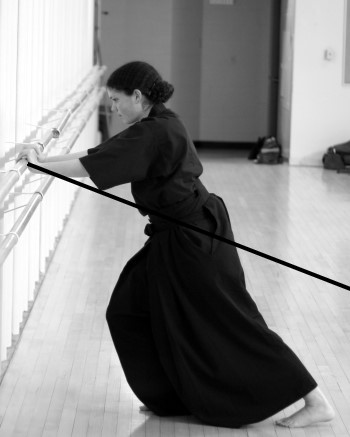
Fig 4
|
This time I've added a straight line from the point of contact with the
barre through Pam's centre of mass, (centre of balance, her tanden).
All movements go through this point, all forces move through this point
which is the still centre around which we move. In figure 4 we can see
that the line has moved much closer to her rear heel. Combine the line
from hand to tanden to floor with the friction of her feet on the floor
and you come up with a push into the barre. With figure 3? Forget it,
she's still taking a rest.
You know what? Aesthetically I like figure 2 better than figure 1, she
looks better don't you think? Not that she doesn't look good in figure
1 I hasten to add, but better in 2.
Let's go to another set of photos to examine these lines of force a bit
more. Which of these two look better to you?
|
Fig
5
|
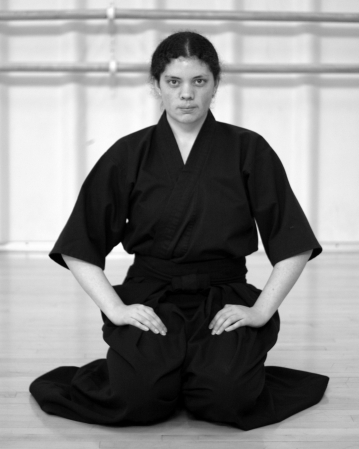
Fig 6
|
If you're doing iaido in my dojo I'm going to tell you to sit like
Figure 5 on the left. It looks better to me, certainly more ladylike,
but it also aligns Pam with her tanden better than the elbows out,
rounded shoulder posture on the right. If she's got a sword in her belt
the hands move from the centre, from her hips, to the sword hilt and
right at me. If she doesn't have a sword she can still strike straight
from her hips at me. In the figure on the right she's going to have to
swing those elbows back in toward her body or else take every bit of
the force of my attack in her rotator cuff muscles and that's going to
blow her shoulders or she'll collapse backward over her feet. Yes I'm
that heavy, I need to lose a few pounds.
I'm not entirely sure that everyone will agree that one posture looks
better aesthetically than another, but I hope that everyone can see
that one posture demonstrates a better understanding of how to project
power through the tanden and out the hands than the other. To me, as a
martial artist, that posture is more pleasing.
Iaido as theatre
So in this consideration of lines of force while simply sitting, we
might say that iaido is a matter of posing, of posturing, of "looking
good". Iaido is theatre. There's a concept in iaido of "saya no uchi no
kachi" which is "winning in the scabbard". One way to do this is to
present an appearance to an opponent that is neither a threat or an
invitation, but one that is alert, ready and without any openings. With
the body aligned correctly, ready to apply force from the ground
through the tanden to the opponent, he sees no openings. Without any
overtly threatening appearance in figure 5 (check out that scowl in
figure 6) there's no feeling that the opponent is about to be attacked,
so he's not threatened, yet there is no appearance of weakness either.
If it looks good, it's probably right.


